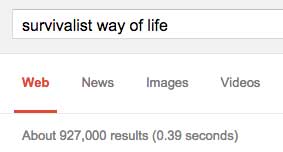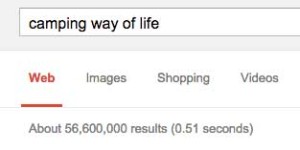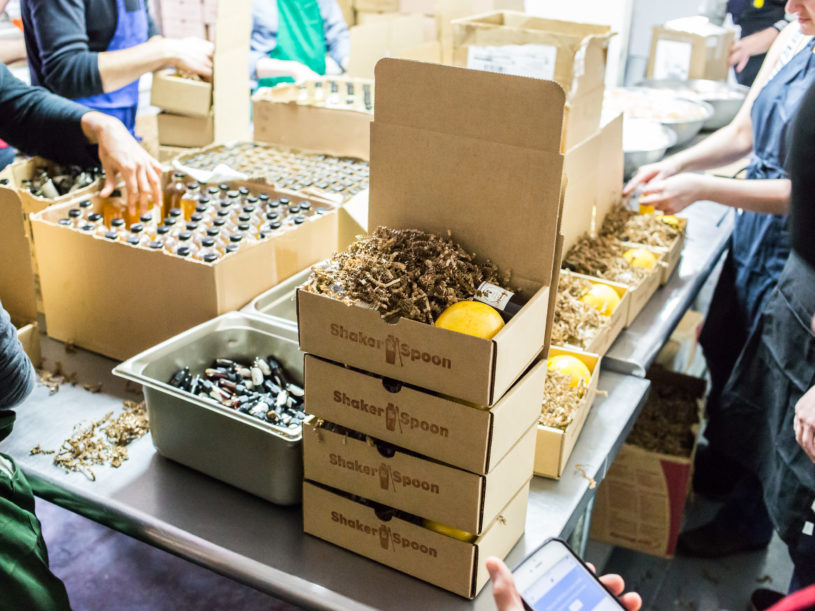One of the most common questions I get as the CEO of Cratejoy is, “Hey Amir – is this a good subscription box business idea?”
It’s always a challenging question to answer on the spot. Sometimes, it’s pretty obvious that an idea for a subscription service is great – but the only surefire way to know is to try to get people to buy it! That’s a lot of work, though, so it’s useful to have a quick way to frame an idea and gauge its chances of success.
After spending time combing through our data at Cratejoy, I’ve come up with a list of 7 properties that I think the best subscription businesses capture. Not every (or even any) subscription business hits all 7 of these properties, but the best subscriptions hit at least 3 or 4. Specifically, we’ll delve into:
- Existing fanbase
- Timeless niche
- Discovery value
- Habitual need
- Gifting potential
- Emotional value, and
- Lifestyle value
When you’re evaluating your idea for a subscription website, it may be useful to consider how your chosen market compares against these 7 properties. I’ve included a test question for each property to help determine whether or not your subscription business idea has it. You should ask yourself the questions as you read.
Property 1: There is an existing community of enthusiasts

A “community of enthusiasts” can be best described as a group of consumers who fall in your target market and actively meet, talk, blog, or review your type of product: they demonstrate real interest. When there is an existing audience of enthusiasts, it does the following:
It serves as pre-existing market validation. There are already people who feel passionately enough about your target sector that they are spending significant time (and hopefully – money!) discussing their passion.
It means there is a cohesive group of end users you can market to.
One of the worst things to deal with as an internet marketer is not knowing who wants to buy your product. Without this information, you can’t form partnerships or even run a Facebook campaign. How can you select an audience for an ad strategy if your audience is “I sure hope someone signs up”? You can’t!
Test question: Is there a magazine or web forum devoted to this interest?
If you think of major successful e-commerce subscriptions like Ipsy, Battlbox, or We Craft Box, you’ll invariably answer: Yes, there are existing communities for each of these sectors.
Property 2: The category is evergreen

An evergreen sector means that your audience will be spending money on this category in their life, no matter what. They were spending money before you showed up, and they will spend money on it long after.
Working within an evergreen sector is powerful because you don’t need to convince your audience that this category of products is something they need in their life – they already know it! Instead, you get to concentrate on why your subscription is a better way to spend their money.
Note: It’s not impossible to create a market. Loot Crate did this. Sure, they captured a ton of dollars that would have gone elsewhere to get their Nerd Swag, but my bet is that they expanded the market significantly by making it so accessible. This is possible, but very hard.
Test Question: Do people already spend money in this category, and will they continue to spend money on it?
The obvious examples here are replenishment subscriptions like Dollar Shave Club.
However, there are less obvious examples as well. For instance, Fandom of the Month is an inexpensive jewelry subscription. You likely do not spend money on jewelry every month, but the type of people that subscribe to Fandom were previously and will continue to frequently purchase inexpensive accessories. In other words, Fandom occupies an evergreen market.
Property 3: The audience is looking to discover on a continuous basis

Discovery is the act of finding new solutions to an existing need, be they better or just new. The classic example of a pure discovery subscription is Birchbox. They, literally, send you samples of new cosmetics every single month. The value proposition is “You’ll discover new cosmetics you may love.” This desire to discover new cosmetics doesn’t go away either. It may be more or less depending on the time of year and what is going on in someone’s life, but in general, these customers are always interested in evolving their look.
Discovery, for the consumer, is two value propositions in one:
1. We’ll find new cool things for you, so you don’t have to spend your time scouring Pinterest or reading magazines to try to find it.
2. We’re actually better than you at finding those new cool things, because we spend all of our time on doing it!
Frequently, this desire for discovery is only understood by a particular subset of the customer audience: the mega fans. A great example here is Hot Sauce of the Month Club, a subscription for hot sauces. For most people, even people who like hot sauce, there is not a real desire to continuously discover new hot sauces. They use sriracha or Tabasco and call it a meal. However, there are some amongst us (ahem, yours truly) who have been trying new hot sauces out for years and will continue to do it for years to come. There’s just no way around it – we have a strong desire to continuously discover. These opportunities are largely hidden from normal folks, and you have to be or know a mega fan to see the possibilities here.
Test Question: Do people already spend time sampling or discussing new products or solutions?
VINYL MOON – a subscription service for discovering new music on vinyl – is a great example of this property. Music fans already spend a huge amount of time discovering new artists (consider Pandora’s premise in this space: you choose artists you know, and they select artists you might like alongside them), and it will likely continue for their entire life. Unplugged Book Box –a self-care subscription for fans of young adult fiction – is another example. Fans of young adult, aka “YA,” fiction are continuously seeking out that next “great read” and they aren’t likely to stop anytime soon.
Property 4: The need is recurring

When most people think of subscriptions, this is the value proposition they think of: “I run out of toilet paper every month so each month I need more toilet paper.” It’s a very straightforward proposition, but it’s only one single dimension of what makes a great subscription box business idea.
Subscriptions that concentrate exclusively on fulfilling a recurring need are known as replenishment subscriptions. Subscriptions that concentrate exclusively on filling a recurring need and add no additional value are extremely rare and typically are only defensible when attached to a powerful brand.
However, couple a recurring need with the other properties in this guide and you have a very powerful business idea.
Test Question: Will someone buy this again on a regular basis?
Almost every successful subscription business has this property, but they aren’t all toilet paper and razor blades. GearSupply is a subscription for new guitar strings, SnackSack is a subscription box that offers snacks for offices, and Pondip Tackle Box is a UK fishing subscription for carp fishermen. The goal here should be to identify a demonstrable and consistent need that exists in your target market.
Property 5: The customer wants to make someone or something they love happy

It’s no secret that subscription boxes are heavily gifted. In fact, that’s why we have the recipient customized gifting feature at Cratejoy.
Some subscriptions take it a step further.
While they inherently make the purchaser/subscriber themselves happy, they are designed particularly to make others happy. This emotional double-whammy is a fantastic reason for consumers to both buy and stay subscribed.
Once subscribed, every month they know that the person (or pet) that they love will get a little burst of joy that the purchaser caused.
These subscription businesses tend to be a little different than your normal subscription because the recipient and the purchaser is rarely the same person. For instance, a subscription like KiwiCrate – a children’s educational subscription – is intended to delight and educate children, but the actual purchaser is generally a parent or relative. In this case, you’re marketing to adults on behalf of children.
Test Question: Is this something that is primarily purchased on behalf of someone else?
Kites and Ivy is a great example of a subscription purchased primarily for someone you love – it’s a subscription for female college students. Another example in this category is PupJoy, which I can absolutely guarantee you has never, ever, been purchased by the intended recipient. (Dogs can’t use computers; they don’t have thumbs.)
Property 6: The customer is sustaining an emotional connection

Everyone feels that little emotional connection to people, places or institutions that have had a strong influence in their life. For some people, it is their favorite sports team; for others, it might be their hometown or a favorite vacation destination; and for still others, it’s their alma mater. For me, it’s Y Combinator. I still go out of my way to wear my faded, ratty Y Combinator founder hoodie every time I can.
Sustaining that emotional connection is invaluable, even more so if you’ve moved away from the object of your affection, aged out of it (in the case of schools) or even if your sport is just out of season right now.
Test Question: Do people wear T-shirts or other clothing to show their pride?
A great example of this emotional connection-based subscription is The Austin BatBox, which is a subscription to locally sourced products from Austin, Texas – but being a long time Austinite, I’m probably biased. 😉
Property 7: It’s a way of life

When a passion goes beyond a hobby and becomes a way of life, it represents a truly fertile niche for a high-quality subscription box business. There are many categories that inspire this almost religious fanaticism in their followers: think runners, CrossFit enthusiasts, or ham radio operators. These categories all have die-hards that truly live for their hobby.
It takes one to know one, though, and you will probably not be able to start a subscription that appeals to the truly rabid followers of a passion without being rabid about it yourself. Authenticity is absolutely key because your subscribers will be able to pick up on it. These subscriptions can be particularly rewarding to run if your product is great – your audience’s natural love for the category means they have unusually low churn.
Test Question: Google <category> + way of life. Do you get relevant results?
BattlBox, a survivalist subscription, is a great example of this. Googling “survivalist way of life” returns almost a million results.

Camp Box, a subscription for camping enthusiasts, is another fantastic example. Googling “camping way of life” returns almost 56M results!

Putting it all together
Great subscriptions don’t hit all of these properties, but they generally hit several. For instance, by my count, BarkBox hits 5 of these properties head-on:
- Property 1: Existing communities of enthusiasts. Google “dog forum.” 374 million results. That’s a lot of enthusiast communities.
- Property 2: An evergreen category. I’ve got 2 dogs and I can tell you that the spending isn’t stopping anytime soon.
- Property 4: A recurring need. Again, my dogs always need to be spoiled.
- Property 5: The customer wants to make someone or something they love happy. They’ve got the memory of a goldfish but I still love to make them smile.
- Property 7: It’s a way of life. “Dog people” is totally a thing.
Other great subscriptions hit fewer, but are still hugely successful. For example, Dollar Shave Club only hits three:
- Property 1: Existing communities of enthusiasts. I had no idea how big of a deal shaving is to people but there are easily a dozen forums devoted to some type of shaving.
- Property 2: An evergreen category. Male pattern baldness doesn’t seem to affect facial hair, which means we’re all going to be shaving for some time to come.
- Property 4: A recurring need. Those razors get dull faster each month. Why can we put a man on the moon but can’t keep a steel razor sharp for more than 3 days?
Don’t get discouraged if your idea doesn’t check every single box. That’s not the right way to think of it. Instead, think of these properties as useful attributes that make your subscription more likely to succeed and just try to get as many as you can. I am hard-pressed to think of a subscription that is successful with less than 3 of these properties. If you think of one, please let me know in the comments!




